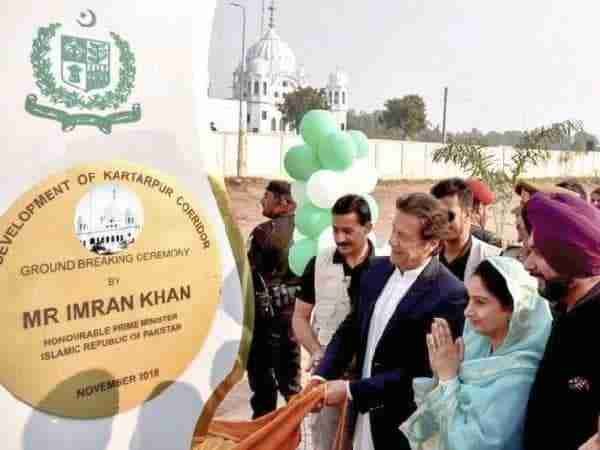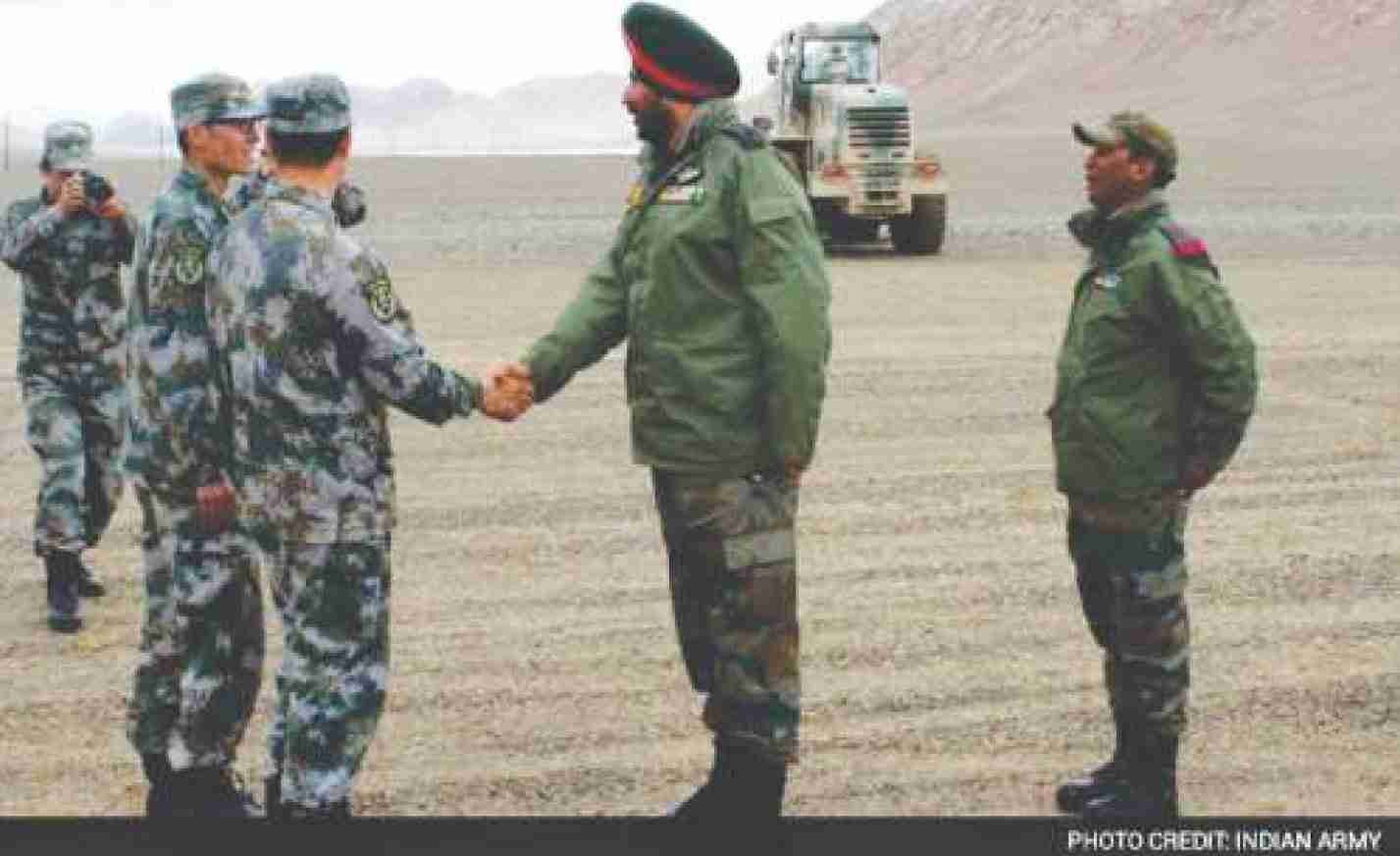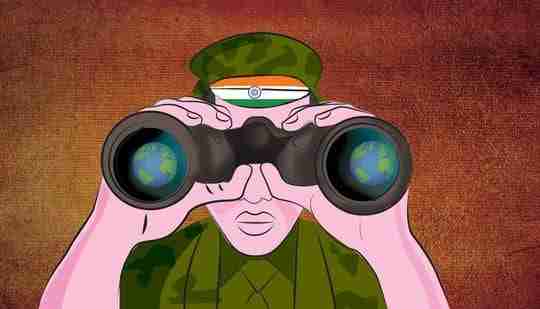Pakistan’s Kartarpur corridor initiative
The proposal for the Kartarpur corridor was floated by India more than two decades ago and emphasised by Mr Vajpayee on his trip to Lahore.
The recent excitement at the formal inauguration of the Kartarpur corridor to facilitate a short and easy passage for Indian Sikh pilgrims to the holiest Sikh shrine (Gurudwara Nankana Sahib) that lies in Pakistan, led many in India to suggest that this could be a bridge to eternal peace (as Navjot Sidhu did), between the two countries. India’s prime minister had even suggested that the initiative was akin to bringing down of the ‘Berlin wall’ for the region. But thereafter India’s foreign minister came out strongly against any assumption that the opening of the corridor could see a thaw in bilateral ties. It has raised questions on whether Mr Modi’s government was divided over what to do with Pakistan. On the other hand, Pakistan’s prime minister went on to assert that his government, all political parties in Pakistan, and Pakistan’s Army were all on the same page on ties with Pakistan. But the question is: “what is it that they’ve agreed on?”. Certainly not over a settlement on Kashmir, on an as is basis; a position that India was willing to take both after the 1965 and 1971 wars. Because if you take the Kashmir dispute away from Pakistan, it’ll be left rudderless.
In fact, the proposal for the Kartarpur corridor was floated by India more than two decades ago, and emphasized by Mr Vajpayee on his trip to Lahore. Having dragged its feet for all these years, Pakistan has suddenly gone ahead with the inauguration now, after Imran Khan was sworn in as their PM. And though it is commonly believed that Imran is the army’s man in the hot seat, there are clearly other reasons for formalizing this proposal on 25th November. For one, it was announced a day prior to the tenth anniversary of the gruesome 26/11 attacks in Mumbai that was carried out by Pakistan and its proxies. The expected media hype over the announcement of the setting up of the corridor would help overshadow the negative press coverage – at least in India – that Pakistan’s ‘deep state’ was expecting. And the other diplomatic benefit, hoped Pakistan, was that the Kartarpur initiative will allow it to come out looking good – and not the epicentre of terrorism in the region- by seeking talks with India, as Imran Khan did at the grand function organised for the event. (Strangely, Pakistan’s establishment had expected India to ignore their support to pro-Khalistan rabid anti-India baiters at this very venue, both prior to and during the event!).
Kartarpur corridor Pakistan’s Prime Minister Imran Khan, cricketer-turned-Indian politician Navjot Singh Sidhu, minister for food processing industries Harsimrat Kaur Badal during ground breaking ceremony for Kartarpur corridor | Photo Credit: PTI
The recent excitement at the formal inauguration of the Kartarpur corridor to facilitate a short and easy passage for Indian Sikh pilgrims to the holiest Sikh shrine (Gurudwara Nankana Sahib) that lies in Pakistan, led many in India to suggest that this could be a bridge to eternal peace (as Navjot Sidhu did), between the two countries. India’s prime minister had even suggested that the initiative was akin to bringing down of the ‘Berlin wall’ for the region. But thereafter India’s foreign minister came out strongly against any assumption that the opening of the corridor could see a thaw in bilateral ties. It has raised questions on whether Mr Modi’s government was divided over what to do with Pakistan. On the other hand, Pakistan’s prime minister went on to assert that his government, all political parties in Pakistan, and Pakistan’s Army were all on the same page on ties with Pakistan. But the question is: “what is it that they’ve agreed on?”. Certainly not over a settlement on Kashmir, on an as is basis; a position that India was willing to take both after the 1965 and 1971 wars. Because if you take the Kashmir dispute away from Pakistan, it’ll be left rudderless.
In fact, the proposal for the Kartarpur corridor was floated by India more than two decades ago, and emphasized by Mr Vajpayee on his trip to Lahore. Having dragged its feet for all these years, Pakistan has suddenly gone ahead with the inauguration now, after Imran Khan was sworn in as their PM. And though it is commonly believed that Imran is the army’s man in the hot seat, there are clearly other reasons for formalizing this proposal on 25th November. For one, it was announced a day prior to the tenth anniversary of the gruesome 26/11 attacks in Mumbai that was carried out by Pakistan and its proxies. The expected media hype over the announcement of the setting up of the corridor would help overshadow the negative press coverage – at least in India – that Pakistan’s ‘deep state’ was expecting. And the other diplomatic benefit, hoped Pakistan, was that the Kartarpur initiative will allow it to come out looking good – and not the epicentre of terrorism in the region- by seeking talks with India, as Imran Khan did at the grand function organised for the event. (Strangely, Pakistan’s establishment had expected India to ignore their support to pro-Khalistan rabid anti-India baiters at this very venue, both prior to and during the event!).
If there is one thing that Imran Khan had wanted with his ‘faustian bargain’ with the Pakistan Army’s brass hats, (when they made it known that he was ‘elected’ to his post, even before the voting was done), was to enjoy the importance he expected to get, as prime minister of a nuclear weapon state. But what he has ended up seeking is desperately needed a financial bailout from the IMF, but that looks unlikely for now. With its forex reserves down to less than $7billion, Imran managed some reprieve with a Saudi promise of $3billion cash and other $3billion of oil. More could come quietly, as some experts suspect. Pakistan has provided military units in the past, to the Saudis and is said to stock a reasonable nuclear arsenal for that Gulf nation, which can be called to use, if Iran comes out formally with its own nukes. And Islamabad’s other hope lies with Beijing, with Pakistan now all but a vassal state, that China controls in so many ways. It virtually funds all major projects in Pakistan now – at unbearably high rates of interest, as Imran knows – from dams in the northern areas of POK to fibre optics cables that connect the Chinese military in Kashgar to GHQ Rawalpindi, all part of the now $60 billion-plus CPEC (China Pakistan Economic Corridor), the flagship part of Chinese President Xi Jinping’s Belt and Road Initiative (earlier OBOR). But China has linked Imran’s call for financial assistance to 15 more projects within Pakistan as part of the CPEC. Ironically it was the CPEC projects that Imran and his advisers had been openly critical off, as Imran was sworn in.
Therefore, an engagement with India would not only ease Pakistan’s sense of isolation but help it convey to the world that even India was willing to overlook its own charges of Pakistan being the epicentre of terrorism and that it wasn’t doing enough to confront the menace of terror on its soil. But India apart, much of the international community led by the US has now had enough of Pakistan’s devious games. Pakistan was thus put on the ‘grey list’ by a UN-approved body, the Financial Action Task Force (FATF) – that monitors funding of terror groups – and its members have been insisting that Pakistan does more, to move out of its grey-list or could it be put on the FATF ‘blacklist’, for being a state sponsor of terrorism. That Imran Khan cannot do, and his Armymen won’t do. Anti-India terror groups within Pakistan are both an asset and a liability for them, but more importantly, Pakistan’s Army is now unable to confront them militarily, since the public support they enjoy will have enormous social implications, if they do so.



